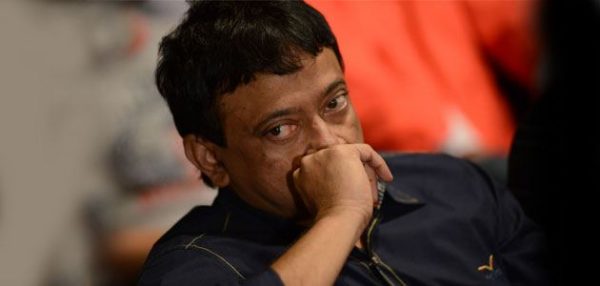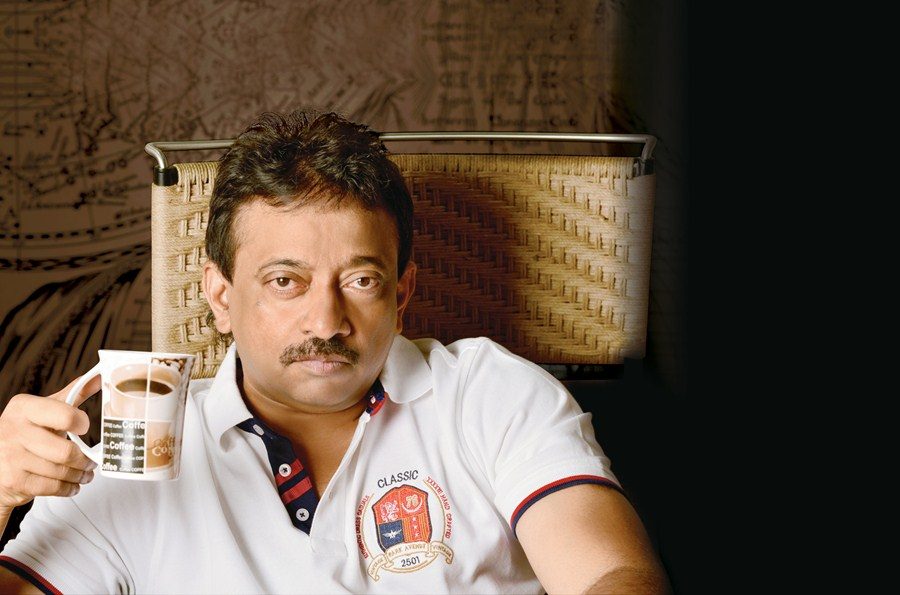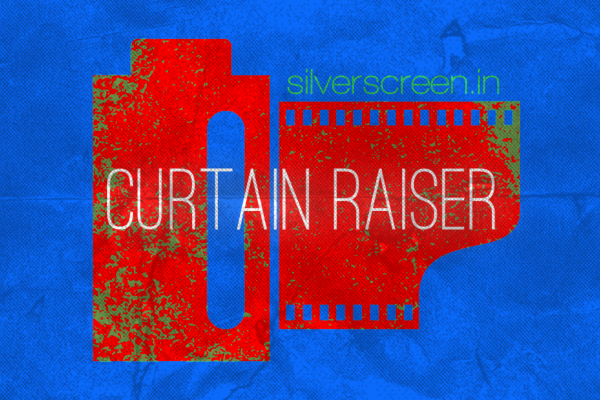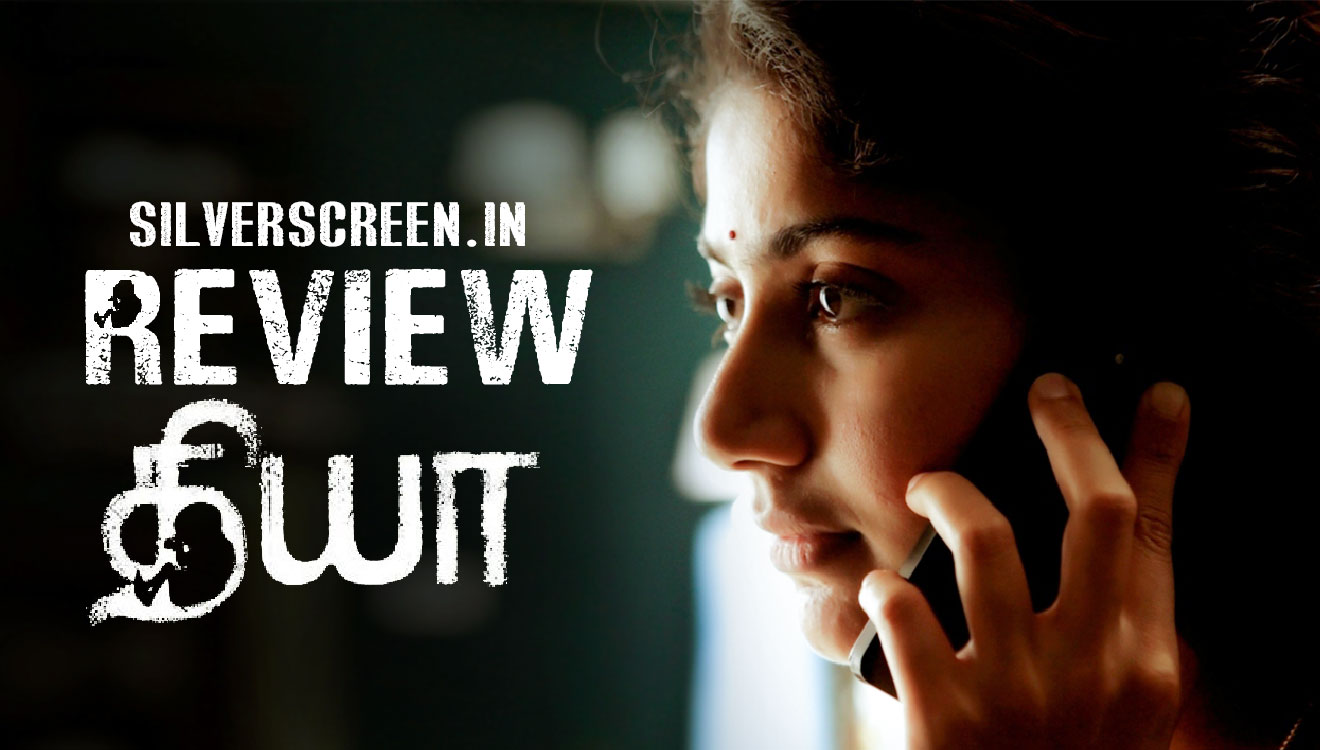
Ram-Gopal-Varma-
Perhaps one can draw parallels with Giuseppe Tornatore’s Malena. The Italian film, set during WWII, chronicles a 13-year-old boy’s obsession with a beautiful woman. But the Savitri posters have a cheap voyeuristic slant to them. Like the ones you see outside B- grade cinema theatres. There are various shots of a boy looking at the woman striking seductive poses, with her sari strategically pulled aside.
And true to form, Varma released a press note asking viewers to share stories of their first crushes with him. “Who is your Savitri? Please share the experiences of such Savitris, so we would incorporate them in this movie. So, Get Lucky with Savitri.”
In hindsight, this shouldn’t come as a surprise. His transition from the intellectual “fountainhead of new age Indian cinema” to a self-destructive genius has been organic. The acknowledged master of Mumbai noir is today a victim of his own craft. As Varma himself has acknowledged in television interviews, he has stopped “teasing the filmmaker in him.” Today, his craft is about shocking viewers, about churning out mindless ideas from his Factory.
So when did this self-destructive journey begin? When did things go horribly wrong for a director who believed in “spending every minute of his energy and talent to tell quality stories?”
Varma’s approach towards cinema has always been a bundle of contradictions – on the one hand, he creates gems like Satya; and then his production house churns out movies at an alarming rate. It is called The Factory. But Varma denies it is the lack of time that is responsible for his poor output.
“Films are about decisions. Time and quality are not inter-related. My ideas might be good, bad or ugly but I am in a rush to make films. I wrote Shiva in 20 minutes and Satya never had the script.” [Link]
Critically and commercially, Sarkar (2005) is probably the last good RGV film. It remains one of the better adaptations of The Godfather to an Indian milieu along with Mani Ratnam’s Nayakan. Incidentally, both Sarkar and Nayakan chose to resurrect the opening scene from the original – a rape victim’s father, Amerigo Bonasera, approaching the Don Corleone for justice.
That year, Varma’s Factory produced seven films including Sarkar. Except for Main Madhuri Dixit Banna Chahti Hoon and My Wife’s Murder, the rest were flops that were mercilessly panned by the critics. A year later, Varma made Shiva, the prequel to his brilliant debut in 1986 by the same name. The movie was a disaster. Like he later admitted in an interview, “Everything went wrong with Shiva. I decided to take Shiva forward, set it in a police setup, etc. Then I got confused about adapting it into the new setup. I wanted to make a film to correct the mistakes of James. I ended up making a film worse than James.”
Here was a filmmaker who directed a brilliant and influential trilogy of Gangster movies (Satya, Company and D). Satya and Company were said to have influenced the Slumdog Millionaire director Danny Boyle for their “slick, often mesmerizing portrayals of the Mumbai underworld”, their display of “brutality and urban violence”, and their gritty realism. The movies were critically acclaimed and commercially successful.
Then he makes James, Sarkar Raj, and Department.
Filmmaking for me is like a conversation, it depends on my mood, he had once famously said. That “mood” resulted in two diametrically different films in 2007 – Nishabd and Aag. If in the former he convinced an ageing Amitabh Bachchan to fall in love with a teenager, he further embarrassed the actor by gifting him his career’s worst role till date in Aag. RGV never quite recovered from Aag.
“Now the whole country knew how horrible it was, but the 100 people working on the film were taken in by what I told them. I psyched them with my vision, I couldn’t do that to the whole country. A lot of times, I take it for granted that my thought process will come through when I start making the film. What went wrong with Aag is there was a multiplicity of objectives. I got caught up trying to translate the audio-video bytes in a new setting that I lost the point of the larger story.” [Link]
Between 2008 and now, his Factory has produced roughly 23 films. He directed 20 of them. The two-part bilingual Rakhtha Charithra (2010) that delved into the complexities of Andhra Pradesh politics was a grotesque display of blood and gore, definitely not for the faint-hearted. But surprisingly, the first part was a commercial success. And his fascination for horror continued: If he made successful in-roads into the genre with edge-of-the seat variants like Kaun (Anurag Kashyap’s script) Bhoot, Vaastu Shashtra, Darna Mana Hai, he slipped in Phoonk 2, Agyat and Bhoot Returns.
Another of RGV’s morbid lures is real-life crime. The gruesome murder of Neeraj Grover in 2008 that led to the arrest of ML Jerome and Maria Susairaj was the inspiration for Not A Love Story (2011). Prominent film reviewer Rajeev Masand christened it “the most senseless move made in Bollywood for a long time.” Another critic called it a “visually unpalatable mix of blood, gore, violent sex, and constant shaky camera movement.”
The Attacks of 26/11, based on the Mumbai 2008 attacks was appreciated more for the lead actor Nana Patekar’s brilliant performance. The filmmaker also received lot of flak for going public about his intention to make a film soon after the attacks occurred.
“For me, anger is something which comes from a deeply felt injustice which gives rise to the so-called courage of conviction… this results in a certain act of rebellion which, depending on the commonality and an identification to the subject matter, will find a huge resonance on both an instinctive and social level.” [Link]
He has always been vocal about his derision for critics. And took great pleasure in cutting them down to size. Like he remarked after reading a particularly nasty piece of review of his Sarkar Raj on a popular website: “I was thrilled that somebody could hate me so much and I mean it. It takes a great deal to hate someone so much.”[Link]
Today, many of the directors he mentored seem to be puzzled by his descent. When Anurag Kashyap, who wrote the script of Sathya, was asked “Ram Gopal Varma is?” on a television show, he replied, “Ram Gopal Varma was, not is”.
Varma was instrumental in reviving the careers of many an actor: Viveikh Oberoi, Manoj Bajpayee, Urmila Matondkar. But he has fallen out with many of them, and his muses from Matondkar to Telugu actor Madhu Shalini never really found leverage outside of his ventures. His mudslinging matches with other filmmakers are legendary: he made a direct dig at Karan Johar in Company, and maintains that “he can never relate to the kind of candyfloss romance he makes.”
Recommended
Last month, Varma’s Ganesh Chathurthi timed tweets made a lot of unnecessary noise. He wondered if “Lord Ganesha eats with his hands or his trunk? Can someone please tell me how a Lord who couldn’t save his own head will save others heads?” It was a transparent attempt to reclaim the spotlight he has lost in the recent years. Just like his Savitri.
When the State Child Rights Protection Commission registered a suo motu case against the director for violating child rights, an annoyed RGV sent out a letter condemning “the people for their mindless speculation about a non-existent issue in the film. I am going to move legally against all the people who for the sake of their own cheap publicity gave my film negative publicity thus affecting the movie’s reputation and the efforts that went into making this movie because I am deeply hurt by such gross irresponsibility on their part.”
And then, Varma turns around and rechristens his movie Sridevi, inviting a response from actress Sridevi Kapoor. She sends him a legal notice to not use her name; his Public Relations team gleefully passes it around.
“I don’t think I’ve ever done anything original in my life. Every line, every scene, every shot in my films has been taken from another film, a book, a play, real life, a TV show… The important thing is that you understand what you are copying. If you understand what’s behind the shot, you’ll never do it the exact same way. The trick is being able to put it in context of a film. We are born with blank minds. And then comes information, information, information… We are what we learn. I’m not original, you are not original.”[Link]



